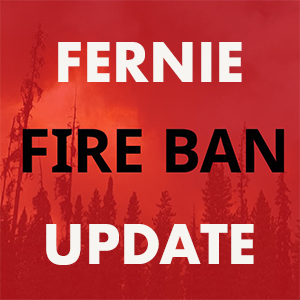The East Kootenay is one of the most important landscapes in North America for wildlife connectivity. Our valleys are havens for ungulates and carnivores and provide corridors that are essential to genetic diversity, the benefits of which extend far beyond our mountain passes.
Unfortunately, a major inter-provincial highway and rail line tear right through the midst of wildlife on the move. Traffic on the Elk Valley’s Highway 3 is up 24% in the past 10 years and increasing use by transport trucks amplifies the lethal nature of this route.
“The Elk Valley is the heart of a critical wildlife corridor that connects animals across borders and mountain ranges,” explains Dr. Clayton Lamb, a leading scientist at the forefront of wildlife connectivity in the region. “Over 60% of BC’s reported grizzly bear collisions occur in southeast BC, despite this area making up only 3% of the provinces’ grizzly bear range.”
How can we keep people and wildlife safe on our busy highways?

In 2010, a report, Highway 3 Transportation Mitigation for Wildlife and Connectivity in Elk Valley, was released to explore solutions to reduce wildlife mortality along this deadly stretch of highway. Over time, more data came available and an update to this report was completed in 2019 by partners Miistakis Institute, Yellowstone to Yukon and Wildsight.
“This report is beginning to pay dividends. Through an analysis of years of research and data including provincial highway statistics and the citizen science program ‘Roadwatch,’ the highest risk sections to wildlife and humans were identified, and potential solutions recommended,” states Randal Macnair, Wildsight Conservation Coordinator in the Elk Valley.
Even before the updated report was released last year, the BC Ministry of Transportation and Infrastructure began using the results to plan for future projects.

“In the Elk Valley, vehicle collisions cause 25% of elk mortalities and 30% of grizzly bear mortalities. We can nearly eliminate these collisions with crossing structures and fencing,” explains Dr. Lamb, one of the authors of the 2019 update.
As the report is extensive, we compiled the results into a visually appealing infographic for ease of general communications. The infographic is designed to easily see the problems, and proposed solutions to the problems of vehicles and wildlife crossing paths along Highway 3.
“Summarizing years’ worth of data on a single page, the infographic brings into sharp focus the way forward that considers wildlife protections for highway infrastructure,” explains Macnair.

Already, two of the proposed projects are in the works for 2020: changes with the Lizard Creek bridge south of Fernie, and the Jaffray passing lane project, west of Jaffray. These two projects are setting the course for a new way to build roads in the East Kootenay – a way that will keep wildlife and people safe.
The new Lizard Creek bridge is designed to have wildlife crossings on both sides of the creek. The area around Fernie is a significant corridor for grizzly bears and other large wildlife, so this crossing is a welcome start to connectivity in the vicinity.
The Jaffray passing lane project will provide safer passage and connectivity for wildlife in the area. A wildlife underpass will be added just west of the 2km of passing lane. Two kilometres of fencing (like that seen in Canada’s mountain parks or over BC’s Coquihalla highway) will now be part of the scenery along Highway 3. Fencing is a key component of the success of separated crossings.
“These two projects are a good start to supporting wildlife connectivity in the East Kootenay. With continued efforts on behalf of the province, industry, environmental organizations and the public we can continue this work,” says Macnair.
The goal is to protect wildlife in the Elk Valley, keep drivers safer, and provide a strong example to the rest of BC of how we can build a future that’s safer for drivers and wildlife on our provincial highways.
”This project has helped foster a shared vision for wildlife amongst different groups including governments, industry, conservation groups, First Nations, scientists, and the public. This project is a good news story, and it is so encouraging to see all these groups working together to help people and wildlife in the valley,” reflects Dr. Lamb.
See the infographic that summarizes over a decade of research into reducing wildlife mortality along Highway 3 here.


























